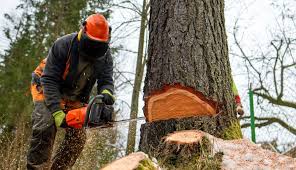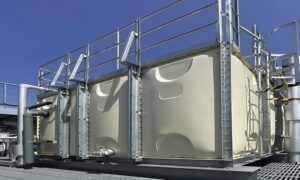Trees add beauty, value, and environmental benefits to any landscape. From providing shade and improving air quality to enhancing curb appeal and stabilizing soil, their presence plays a vital role in both residential and commercial spaces. However, trees also require care, and sometimes intervention, to remain healthy and safe. This is where tree services become crucial.
Comprehensive tree care goes beyond simply cutting branches or removing dead wood. It involves a variety of skilled tasks—many of which require knowledge, experience, and specialized equipment. In this guide, we’ll explore the full scope of professional tree services, their importance, when to use them, and how they contribute to the overall health and safety of your property.
Understanding the Scope of Tree Services
Tree services encompass a wide range of activities focused on the health, maintenance, and management of trees. Whether you’re dealing with overgrown branches, storm-damaged limbs, or the need for preventative care, these services are designed to address both aesthetic and safety concerns.
The most common tree services include:
- Tree Pruning and Trimming
- Tree Removal
- Stump Grinding
- Emergency Tree Services
- Tree Health Assessments
- Planting and Transplanting
- Cabling and Bracing
- Pest and Disease Management
Each of these services serves a different purpose and is often recommended based on the specific needs of your landscape.
The Importance of Regular Tree Maintenance
Trees are living organisms, and like any living thing, they require regular care. While nature does a good job of keeping forests in check, urban and suburban environments present unique challenges that demand human intervention.
Here’s why routine maintenance from professional tree services is so important:
1. Safety
Dead or weak branches can pose a serious threat to people, property, and infrastructure. Regular trimming reduces the risk of falling limbs, especially during storms or high winds.
2. Health
Trimming dead or diseased branches prevents the spread of infections and allows the tree to direct energy to healthier growth. Early detection of disease can often save a tree that would otherwise decline.
3. Growth Management
Pruning controls a tree’s shape and size, encouraging strong structure and balanced growth. This is particularly important for younger trees, which benefit from early shaping to avoid problems later.
4. Aesthetic Appeal
Neatly maintained trees significantly improve the look of a property. Strategic pruning can enhance the shape of the tree and ensure it complements the surrounding landscape.
5. Protection of Property
Tree roots and branches can interfere with foundations, sidewalks, driveways, and utility lines. Professional care ensures that trees grow in a way that’s safe and non-invasive.
Tree Pruning and Trimming: More Than Just Aesthetic
Pruning is one of the most requested tree services, but it’s not just about appearance. There are different types of pruning based on the specific goal:
- Crown Cleaning: Removing dead, diseased, or weak branches.
- Crown Thinning: Reducing the density to allow more light and air through the canopy.
- Crown Raising: Removing lower branches for clearance beneath the tree.
- Crown Reduction: Reducing the height or spread of a tree for safety or structural reasons.
Professional arborists understand the biology of trees and apply pruning techniques that promote health without causing undue stress or damage.
Tree Removal: A Last Resort
While most tree services focus on preservation, sometimes removal is necessary. A tree that is severely diseased, dying, or poses an immediate danger to property or people must be safely taken down.
Tree removal is a complex task that involves planning, safety protocols, and specialized equipment such as rigging systems, chainsaws, and cranes. Improper removal can cause extensive damage and injury. That’s why it should only be performed by trained professionals.
In many cases, removal is followed by stump grinding, which eliminates the remaining trunk below the surface level. This not only improves aesthetics but also prevents pests and regrowth.
Tree Health and Risk Assessments
A critical part of long-term tree care is knowing the condition of your trees. Professional tree assessments involve examining signs of disease, decay, structural instability, and environmental stress.
Arborists can identify:
- Insect infestations
- Fungal growths or internal decay
- Cracks in trunks or limbs
- Root damage or soil compaction
- Canopy dieback or leaf discoloration
Early detection allows for treatments that can often reverse or mitigate the problem. In cases where the tree poses a hazard, proactive removal or structural support may be recommended.
Emergency Tree Services and Storm Response
Natural disasters and severe weather can cause significant tree damage. Storms can split trunks, tear off limbs, or even uproot entire trees. In these moments, fast response is critical to ensure safety and minimize property damage.
Emergency tree services specialize in:
- Clearing fallen trees from homes, roads, or power lines
- Removing dangerously hanging limbs
- Stabilizing damaged trees to prevent further failure
- Providing urgent assessments and recovery plans
Hiring a service that offers 24/7 emergency support can make all the difference during crisis situations.
Planting and Transplanting: Starting on the Right Root
Not all tree services involve removal or cutting. Many professional companies also help with planting new trees or relocating existing ones. These tasks require knowledge of soil types, root systems, proper planting depth, and species compatibility with the environment.
Proper planting ensures that:
- Trees have room to grow without conflicting with structures
- Roots can expand without damaging underground systems
- The tree thrives with minimal stress and disease risk
Transplanting, on the other hand, involves moving a tree from one location to another. It’s a delicate process that must be executed with care to avoid damaging the root ball or causing transplant shock.
Tree Cabling and Bracing for Structural Support
Some trees may grow in a way that makes them structurally weak—particularly if they have multiple trunks, heavy limbs, or past storm damage. In such cases, cabling and bracing are used to support weak branches or trunks and reduce the risk of failure.
Steel cables or flexible braces are installed to redistribute the load and allow the tree to continue growing safely. This proactive approach is an excellent alternative to removal, especially for trees with historic or sentimental value.
Integrated Pest and Disease Management
Trees are susceptible to a wide range of pests and diseases, many of which can kill a tree if left untreated. Tree care professionals offer treatments based on integrated pest management (IPM) principles that minimize environmental harm while targeting the problem effectively.
Common issues include:
- Aphid infestations
- Fungal infections like powdery mildew or root rot
- Borer beetles and other wood-damaging insects
- Mistletoe or parasitic plants
A proper diagnosis followed by targeted treatment can save the tree and prevent the issue from spreading to other plants in the landscape.
Choosing the Right Tree Service Provider
Not all tree companies offer the same level of expertise, and choosing the right one can make a major difference in safety, outcome, and cost. Here are some factors to consider:
- Certification: Look for ISA-certified arborists with professional credentials.
- Insurance: Ensure the provider carries liability and worker’s compensation insurance.
- Reputation: Check online reviews, references, and portfolio examples.
- Equipment: Make sure the company has the tools needed for your specific project.
- Transparent Pricing: A detailed estimate should outline all services and potential additional charges.
A trustworthy provider of tree services will offer clear communication, prioritize safety, and tailor their approach to your unique needs.
Environmental Responsibility in Tree Care
Modern tree care is about more than maintenance—it’s also about sustainability. Ethical providers follow environmentally responsible practices such as:
- Recycling wood into mulch or lumber
- Avoiding unnecessary removal
- Using eco-friendly pest control methods
- Preserving native species and supporting biodiversity
As stewards of the environment, tree service professionals play a vital role in promoting green practices that benefit future generations.
Final Thoughts
Trees are one of nature’s most valuable assets, but they require thoughtful care to remain healthy and safe in modern landscapes. Whether it’s preventive maintenance, disease management, or emergency response, professional tree services provide essential support that homeowners and property managers shouldn’t overlook.
By investing in the right services at the right time, you protect your property, enhance your landscape, and ensure the long-term vitality of the trees that bring so much life to your environment.



































